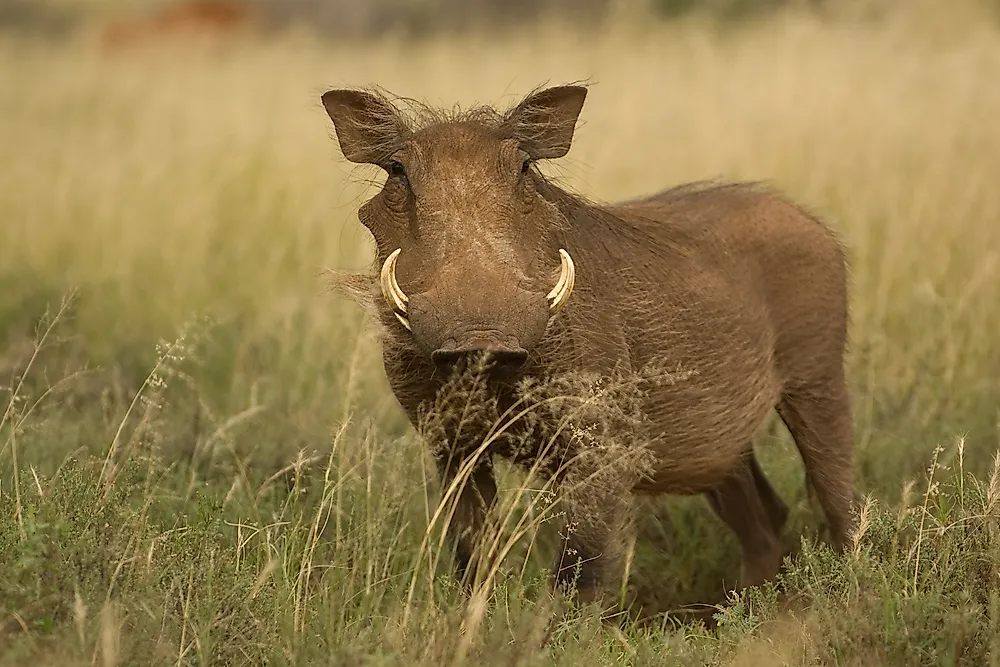Desert Warthog Facts: Animals of Africa

The desert warthog is an animal belonging to the pig family that exists only in Africa. Desert warthogs have a sturdy frame and adults average 49 inches in length and 165 pounds. Warthogs are generally brown although their hairy crests on the spine may be whitish. The tusks that the animals have are nothing more than oversized canines. Males have bigger tusks than females. Larger tusks and facial warts are what are used to distinguish between desert warthogs from other similar animals like bush-pigs and giant forest hogs.
Behavior
Females and their young ones prefer to live in small groups known as “sounders” while males may form groups of their own or stay alone. A sounder occupies a sizeable territory measuring around 3.9 square miles which is typically close to a water source. Warthogs live in burrows which may be interchanged between two groups that live close to one another. Warthogs are daytime creatures.
Habitat and Range
The desert warthog is native to a few select nations in the East African zone. Previously, another subspecies of the desert warthog, the Cape warthog, used to exist in sections of Cape Province and Natal Province (both in South Africa). Unfortunately, this subspecies became extinct in the late 1800s. The desert warthog prefers the arid countryside with some scattered vegetation in low-lying places. Also, its habitat is always close to a water source which is why it is easy to find them close to human settlements.
Diet
Contrary to popular misconceptions that desert warthogs and similar species are vicious predators because of their protruding canines, desert warthogs are predominantly herbivores. A sounder will be guided by an older female during grazing and foraging periods. The animals eat grass, fruits, flowers and leafy vegetation. In times when sustenance is limited, they will be seen eating odd foods like rhizomes, bulbs, and tubers with their elongated tusks. Occasionally, they will also eat insects, dead animals, or tree bark.











